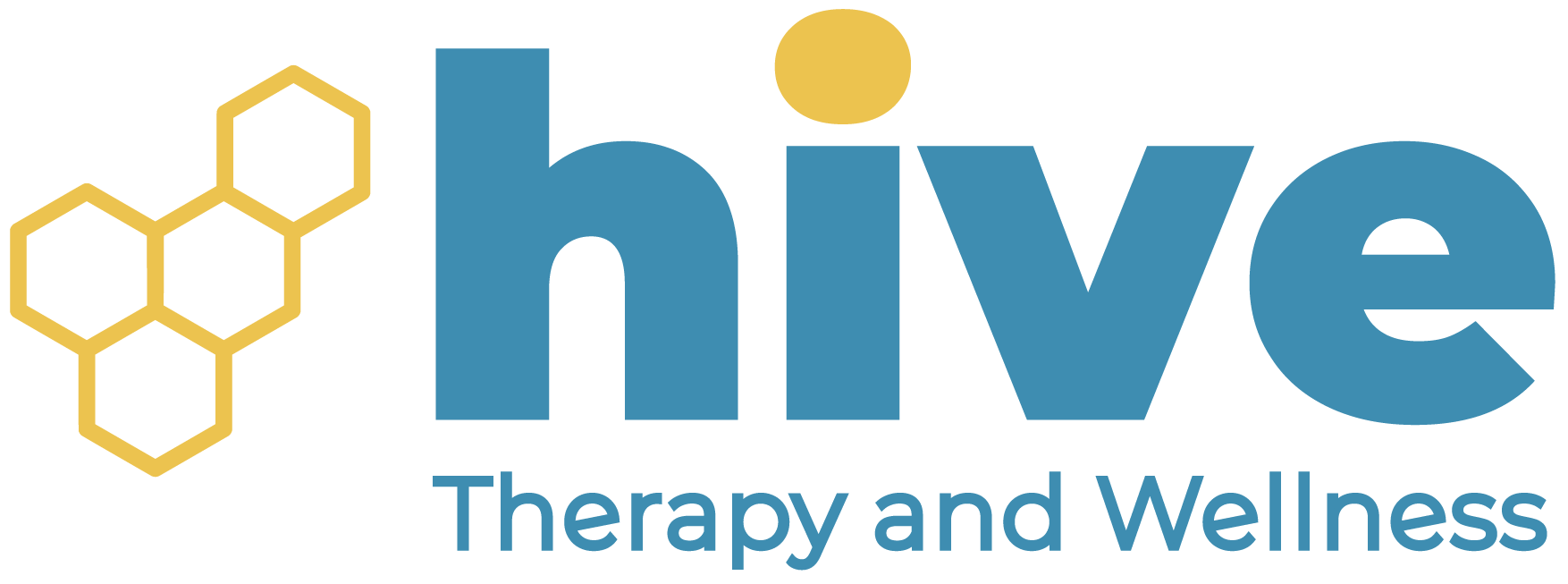Premature Ejaculation
Move Better. Live Fuller. Your Wellness Journey Starts Here.
Schedule a FREE Discovery Call!
What Is Premature Ejaculation?
Premature ejaculation is a common condition in which a person experiences orgasm or ejaculation earlier than they wanted during sexual activity, such as penetrative intercourse or masturbation.
Individuals who experience premature ejaculation may frequently struggle to control or delay ejaculation, sometimes with occasional success.
For penetrative sex, premature ejaculation typically occurs within a very short period. This amount of time can vary from person to person, and the duration may range anywhere from one to three minutes after the start of penetration.

In actuality, premature ejaculation can be considered for longer periods of time too, if it is occurring at a length of time that is unideal for you or your partner. If premature ejaculation causes frustration for you or happens very often, it is recommended that you seek treatment to maintain your sexual health and prevent feelings of distress.
Premature ejaculation may be experienced from the beginning of an individual’s sex life, or experienced later in life after having no previous negative experiences or trouble with ejaculation. Occasionally experiencing premature ejaculation is not usually a concern, but someone who almost always experiences it will need treatment in order to address the problem.
Individuals may feel embarrassed or frustrated with premature ejaculation, and may even try to avoid sex or treatment. However, it is actually a common and treatable condition—there’s no need to feel embarrassed about sexual health!
The physical therapists at Hive Therapy and Wellness have seen a variety of conditions, and work hard to create a friendly and comfortable environment for all patients. They encourage better sexual health for everyone, so no need to feel shame or embarrassment when coming in for treatment!
What Causes Premature Ejaculation?
There isn’t one main cause of premature ejaculation. Many psychological and physical factors can contribute to the condition. In many cases, psychological factors play a major role in causing premature ejaculation, such as with the following examples:
- Fear or anxiety with sexual performance
- Poor body image
- Fear or anxiety from erectile dysfunction
- Stress or depression from outside forces or relationship problems
- Past negative experiences or trauma involving sex
- Religious or cultural influences that may affect views on sexuality or create feelings of anxiety/guilt
When it comes to physical factors, there are a few different possible contributors, including:
- Pelvic floor dysfunction
- Erectile dysfunction
- Hormonal problems
- Prostate issues
- Hypersensitive penile skin
Physical causes of premature ejaculation are not typically due to underlying conditions, diseases, or infections, and the condition is very treatable. Treatment for this condition often needs a multidisciplinary approach, addressing both physical and psychological factors that may contribute to your condition. Pelvic floor physical therapy can play a large role in the treatment of premature ejaculation. This is because the pelvic floor plays an essential role in ejaculation!
The pelvic floor is a group of muscles that every person has. These important muscles aid in many different functions and support the body’s stability and balance. Some aspects controlled by the pelvic floor include urination, defecation, and sexual functions—all of which are made possible due to pelvic floor muscle contraction and relaxation. For those with a penis, the pelvic floor allows for erections, sensations, orgasms, and ejaculation. In the case of ejaculation, the pelvic floor contracts repeatedly to expel semen.
Unfortunately, the pelvic floor may not always be in perfect health. Many individuals have pelvic floor dysfunction, which can be weakness, tightness, inflexibility, or poor coordination of their pelvic floor muscles. When dysfunction is present, sexual function or appreciation becomes more difficult.
This is where the pelvic floor ties into premature ejaculation. When the pelvic floor muscles are too tight and weak, they become sensitive and hyperactive. Having hyperactive pelvic floor muscles can make it very difficult to delay ejaculation during sex. Similarly, having poor coordination of the pelvic floor muscles can make it difficult to control the timing of ejaculation. Not understanding or having control over your pelvic floor muscles will result in more difficulty when trying to delay ejaculation.
Therefore, pelvic floor physical therapy is a safe and beneficial form of treatment to encourage better sexual function and satisfaction—which we’ll discuss next!
Physical Therapy for Premature Ejaculation
Pelvic floor physical therapy for premature ejaculation focuses on improving your ability to feel and control your pelvic floor muscles, as well as engaging in treatments or exercises that release tension and improve strength. This will optimize your pelvic floor health and voluntary control of your pelvic floor muscles—improving your ability to delay ejaculation and meet sexual goals.
When it comes to sexual health and treatment, Hive Therapy and Wellness understands that each person has their own level of comfort. Treatments or evaluations can be both internal or external—however, our physical therapists will never begin without your explicit consent.
We will always explain the treatment or examination process and request consent before starting. Remember, you are in full control and never have to consent to treatments that you are uncomfortable with. You can even rescind consent at any time. While internal treatments or exams can provide valuable information about the pelvic floor, our physical therapists will always prioritize your comfort!
So, what can pelvic floor therapy for premature ejaculation look like? Some common treatments will include the following:
Manual Therapy
Manual therapy is a hands-on technique that manipulates muscle tissue to encourage relaxation and reduce tension. This treatment is often performed on the pelvic floor using tools that can be safely utilized internally via the rectum. Additionally, external manual therapy can be performed on areas of the body such as the pelvis, low back, hips, and abdominals, which can all hold tension that affects the pelvic floor.
Neuromuscular Re-Education and Biofeedback
Your pelvic floor therapist will help you gain better awareness, feel, and control of your pelvic floor muscles through neuromuscular re-education and biofeedback. These treatments allow you to learn activation and relaxation of the pelvic floor by providing real-time feedback as you practice. They are essential for patients to better understand their pelvic floor and improve coordination of their muscles!
Behavioral Modifications
Some habits, postures, and lifestyle choices can unintentionally create pelvic floor tension and affect an individual’s ability to delay ejaculation. Some aspects that can create pelvic floor tension or contribute to premature ejaculation include:
- Having poor standing, sitting, or toilet posture
- Having spinal misalignment
- Sitting for prolonged periods of time
- Straining with bowel movements
- Holding urine for long periods of time
- Frequent hurried masturbation
- And more
Your physical therapist will be able to identify these harmful behaviors and correct them as needed with education and treatment.
Exercising and Stretching
Your pelvic floor physical therapist will curate a unique exercise and stretching routine to address muscle imbalances or tightness. This can include strengthening of your hips, back, abdominals, and pelvis to reduce tension on your pelvic floor. Stretching of these areas will improve flexibility and mobility of your pelvic floor muscles, and prevent future tension from building.
Relaxation and More
Relaxation techniques such as diaphragmatic breathing can relax not only the pelvic floor, but your mind as well. Your pelvic floor therapist can teach you these techniques so that you can reduce tension in your pelvic floor, as well as reduce anxiety and stress that may worsen premature ejaculation.
All of the above-described treatments are common methods utilized at Hive Therapy and Wellness to reduce tension and improve function of the pelvic floor!
However, as mentioned before, treating premature ejaculation requires a holistic approach to address not only physical factors, but also psychological factors. The physical therapists at Hive Therapy and Wellness are always open to collaboration with your urologists or sex therapists if needed for a better treatment experience!
Additionally, there are many other treatments that a pelvic floor physical therapist can use to enhance sexual function and appreciation, as well as improve your pelvic floor control and ability to delay ejaculation. The treatments utilized in your care plan may vary, as treatment at Hive Therapy and Wellness aims to provide an individualized and comprehensive treatment plan for each and every patient. Therefore, while in our care, you may experience any of the following treatments:
- Neuromuscular re-education
- Manual therapy
- Exercise prescription
- Dry needling
- Cupping
- Tissue scraping
- Behavioral modifications
- Therapeutic activities
- Electrical muscle stimulation
- Spinal manipulation
- Therapeutic modalities
- Biofeedback
Premature ejaculation is a common condition in which a person experiences orgasm or ejaculation earlier than they wanted during sexual activity, such as penetrative intercourse or masturbation.
Individuals who experience premature ejaculation may frequently struggle to control or delay ejaculation, sometimes with occasional success.
For penetrative sex, premature ejaculation typically occurs within a very short period. This amount of time can vary from person to person, and the duration may range anywhere from one to three minutes after the start of penetration.
In actuality, premature ejaculation can be considered for longer periods of time too, if it is occurring at a length of time that is unideal for you or your partner.
If premature ejaculation causes frustration for you or happens very often, it is recommended that you seek treatment to maintain your sexual health and prevent feelings of distress.
Premature ejaculation may be experienced from the beginning of an individual’s sex life, or experienced later in life after having no previous negative experiences or trouble with ejaculation.
Occasionally experiencing premature ejaculation is not usually a concern, but someone who almost always experiences it will need treatment in order to address the problem.
Individuals may feel embarrassed or frustrated with premature ejaculation, and may even try to avoid sex or treatment. However, it is actually a common and treatable condition—there’s no need to feel embarrassed about sexual health!
The physical therapists at Hive Therapy and Wellness have seen a variety of conditions, and work hard to create a friendly and comfortable environment for all patients.
They encourage better sexual health for everyone, so no need to feel shame or embarrassment when coming in for treatment!
There isn’t one main cause of premature ejaculation. Many psychological and physical factors can contribute to the condition.
In many cases, psychological factors play a major role in causing premature ejaculation, such as with the following examples:
- Fear or anxiety with sexual performance
- Poor body image
- Fear or anxiety from erectile dysfunction
- Stress or depression from outside forces or relationship problems
- Past negative experiences or trauma involving sex
- Religious or cultural influences that may affect views on sexuality or create feelings of anxiety/guilt
When it comes to physical factors, there are a few different possible contributors, including:
- Pelvic floor dysfunction
- Erectile dysfunction
- Hormonal problems
- Prostate issues
- Hypersensitive penile skin
Physical causes of premature ejaculation are not typically due to underlying conditions, diseases, or infections, and the condition is very treatable.
Treatment for this condition often needs a multidisciplinary approach, addressing both physical and psychological factors that may contribute to your condition.
Pelvic floor physical therapy can play a large role in the treatment of premature ejaculation. This is because the pelvic floor plays an essential role in ejaculation!
The pelvic floor is a group of muscles that every person has. These important muscles aid in many different functions and support the body’s stability and balance.
Some aspects controlled by the pelvic floor include urination, defecation, and sexual functions—all of which are made possible due to pelvic floor muscle contraction and relaxation.
For those with a penis, the pelvic floor allows for erections, sensations, orgasms, and ejaculation. In the case of ejaculation, the pelvic floor contracts repeatedly to expel semen.
Unfortunately, the pelvic floor may not always be in perfect health. Many individuals have pelvic floor dysfunction, which can be weakness, tightness, inflexibility, or poor coordination of their pelvic floor muscles.
When dysfunction is present, sexual function or appreciation becomes more difficult.
This is where the pelvic floor ties into premature ejaculation. When the pelvic floor muscles are too tight and weak, they become sensitive and hyperactive. Having hyperactive pelvic floor muscles can make it very difficult to delay ejaculation during sex.
Similarly, having poor coordination of the pelvic floor muscles can make it difficult to control the timing of ejaculation. Not understanding or having control over your pelvic floor muscles will result in more difficulty when trying to delay ejaculation.
Therefore, pelvic floor physical therapy is a safe and beneficial form of treatment to encourage better sexual function and satisfaction—which we’ll discuss next!
Pelvic floor physical therapy for premature ejaculation focuses on improving your ability to feel and control your pelvic floor muscles, as well as engaging in treatments or exercises that release tension and improve strength.
This will optimize your pelvic floor health and voluntary control of your pelvic floor muscles—improving your ability to delay ejaculation and meet sexual goals.
When it comes to sexual health and treatment, Hive Therapy and Wellness understands that each person has their own level of comfort.
Treatments or evaluations can be both internal or external—however, our physical therapists will never begin without your explicit consent.
We will always explain the treatment or examination process and request consent before starting. Remember, you are in full control and never have to consent to treatments that you are uncomfortable with.
You can even rescind consent at any time. While internal treatments or exams can provide valuable information about the pelvic floor, our physical therapists will always prioritize your comfort!
So, what can pelvic floor therapy for premature ejaculation look like? Some common treatments will include the following:
Manual Therapy
Manual therapy is a hands-on technique that manipulates muscle tissue to encourage relaxation and reduce tension. This treatment is often performed on the pelvic floor using tools that can be safely utilized internally via the rectum.
Additionally, external manual therapy can be performed on areas of the body such as the pelvis, low back, hips, and abdominals, which can all hold tension that affects the pelvic floor.
Neuromuscular Re-Education and Biofeedback
Your pelvic floor therapist will help you gain better awareness, feel, and control of your pelvic floor muscles through neuromuscular re-education and biofeedback.
These treatments allow you to learn activation and relaxation of the pelvic floor by providing real-time feedback as you practice. They are essential for patients to better understand their pelvic floor and improve coordination of their muscles!
Behavioral Modifications
Some habits, postures, and lifestyle choices can unintentionally create pelvic floor tension and affect an individual’s ability to delay ejaculation.
Some aspects that can create pelvic floor tension or contribute to premature ejaculation include:
- Having poor standing, sitting, or toilet posture
- Having spinal misalignment
- Sitting for prolonged periods of time
- Straining with bowel movements
- Holding urine for long periods of time
- Frequent hurried masturbation
- And more
Your physical therapist will be able to identify these harmful behaviors and correct them as needed with education and treatment.
Exercising and Stretching
Your pelvic floor physical therapist will curate a unique exercise and stretching routine to address muscle imbalances or tightness. This can include strengthening of your hips, back, abdominals, and pelvis to reduce tension on your pelvic floor.
Stretching of these areas will improve flexibility and mobility of your pelvic floor muscles, and prevent future tension from building.
Relaxation and More
Relaxation techniques such as diaphragmatic breathing can relax not only the pelvic floor, but your mind as well.
Your pelvic floor therapist can teach you these techniques so that you can reduce tension in your pelvic floor, as well as reduce anxiety and stress that may worsen premature ejaculation.
All of the above-described treatments are common methods utilized at Hive Therapy and Wellness to reduce tension and improve function of the pelvic floor!
However, as mentioned before, treating premature ejaculation requires a holistic approach to address not only physical factors, but also psychological factors.
The physical therapists at Hive Therapy and Wellness are always open to collaboration with your urologists or sex therapists if needed for a better treatment experience!
Additionally, there are many other treatments that a pelvic floor physical therapist can use to enhance sexual function and appreciation, as well as improve your pelvic floor control and ability to delay ejaculation.
The treatments utilized in your care plan may vary, as treatment at Hive Therapy and Wellness aims to provide an individualized and comprehensive treatment plan for each and every patient.
Therefore, while in our care, you may experience any of the following treatments:
- Neuromuscular re-education
- Manual therapy
- Exercise prescription
- Dry needling
- Cupping
- Tissue scraping
- Behavioral modifications
- Therapeutic activities
- Electrical muscle stimulation
- Spinal manipulation
- Therapeutic modalities
- Biofeedback
You can learn more about these treatments on our Treatments Page.





